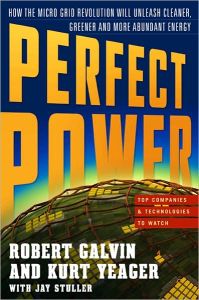
Perfect Power
How the MicroGrid Revolution Will Unleash Cleaner, Greener, More Abundant Energy
Recommendation
Just when you thought you already had plenty to worry about, experts Robert Garvin and Kurt Yaeger, and writer Jay Stuller report that the U.S.’s electricity supply system is woefully outdated and in danger of widespread outages. Then, getAbstract is glad to report, their readable book also presents an apparently reasonable remedy: “microgrids.” These smart, localized electrical networks conserve and store energy, and can redirect it to the parts of the electrical system that need it most. This bright proposal addresses a serious, but under reported problem. The authors, though perhaps more involved than most objective reporters, discuss electricity’s scientific, social, economic and environmental impact. They make their solution more applicable and appealing by identifying companies that are developing microgrid technology. Unlike so many daunting problems, this one seems surmountable, if the U.S. – state by state – can muster the requisite funding and overcome the gooey regulatory status quo.
Summary
About the Authors
Robert Galvin heads the Galvin Electricity Initiative. He is the former Chairman and CEO of Motorola, Inc., where he pioneered “Six-Sigma Quality.” Kurt Yaeger is former President and CEO of the Electric Power Research Institute. Jay Stuller, who worked in public affairs and communication for the Chevron Corporation, has written seven books and nearly 1,000 articles.









Comment on this summary